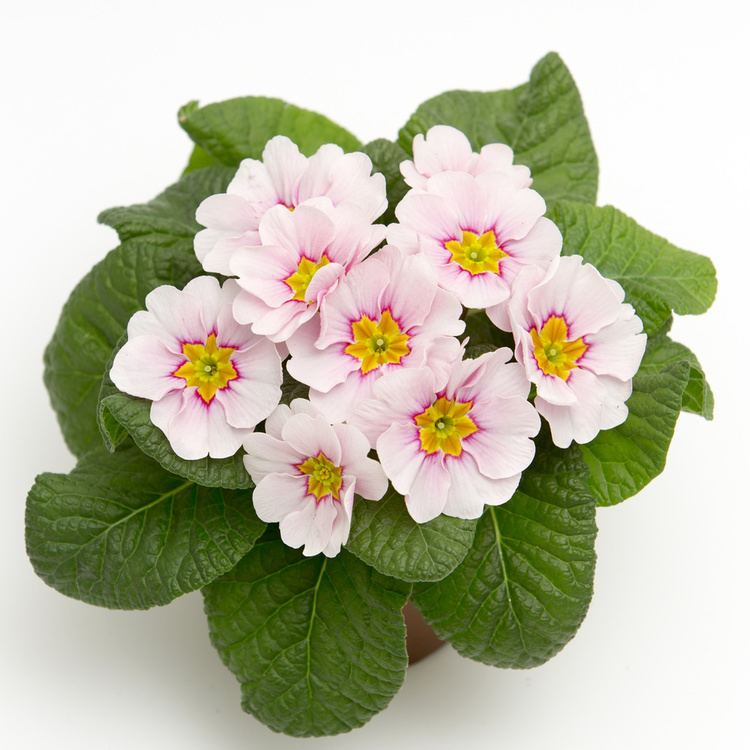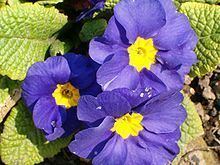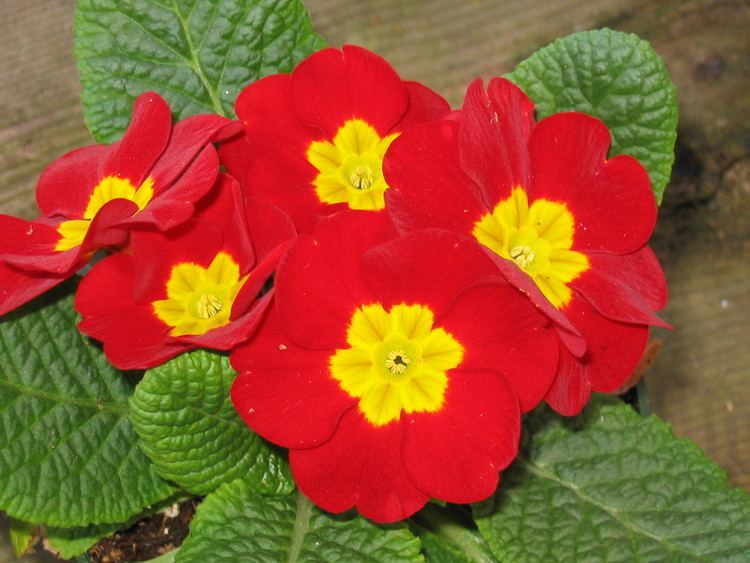Family Primulaceae Higher classification Primulaceae | Scientific name Primula | |
 | ||
Lower classifications Cowslip, Primrose, Primula auricula, Primula elatior, Primula sieboldii | ||
Primula polyanthus
Primula /ˈprɪmjʊlə/ is a genus of mainly herbaceous flowering plants in the family Primulaceae. They include the familiar wildflower of banks and verges, the primrose (P. vulgaris). Other common Species are P. auricula (auricula), P. veris (cowslip) and P. elatior (oxlip). These species and many others are valued for their ornamental flowers. They have been extensively cultivated and hybridised - in the case of the primrose, for many hundreds of years. Primula are native to the temperate northern hemisphere, south into tropical mountains in Ethiopia, Indonesia and New Guinea, and in temperate southern South America. Almost half of the known species are from the Himalayas.
Contents
- Primula polyanthus
- Flower gardens how to grow primrose primula
- Description
- Etymology
- Ecology
- Garden hybrids and cultivars
- Classification
- Sections of genus Primula
- Selected species
- Hybrids
- References

Primula has about 500 species in traditional treatments, and more if certain related genera are included within its circumscription.

Flower gardens how to grow primrose primula
Description

Primula is a complex and varied genus, with a range of habitats from alpine slopes to boggy meadows. Plants bloom mostly during the spring, with flowers often appearing in spherical umbels on stout stems arising from basal rosettes of leaves; their flowers can be purple, yellow, red, pink, blue, or white. Some species show a white mealy bloom (farina) on various parts of the plant. Many species are adapted to alpine climates.
Etymology

The word primula is the Latin feminine diminutive of primus, meaning first (prime), applied to flowers that are among the first to open in spring.
Ecology
Primroses are used as food plants by the larvae (caterpillars) of some Lepidoptera species, including Duke of Burgundy butterfly, Large Yellow Underwing, Lesser Broad-bordered Yellow Underwing, Setaceous Hebrew Character and Silver-ground Carpet.
Garden hybrids and cultivars
Primula species have been extensively cultivated and hybridised, mainly derived from P. elatior, P. juliae, P. veris and P. vulgaris. Polyanthus (often called P. polyantha) is one such group of plants, which has produced a large variety of strains in all colours, usually grown as annuals, and available as seeds or young plants.
The following hybrid varieties and cultivars have gained the Royal Horticultural Society's Award of Garden Merit:
Classification
The genus Dodecatheon originated from within Primula, so some authorities include the 14 species of Dodecatheon in Primula.
Sections of genus Primula
The classification of the genus Primula has been investigated by botanists for over a century. As the genus is both large and diverse (with about 500 species), botanists have organized the species in various sub-generic groups. The most common is division into a series of thirty sections. Some of these sections (e.g. Vernales, Auricula) contain many species; others contain only one.
Selected species
Species include:
